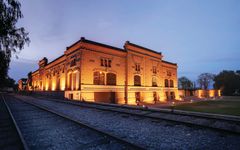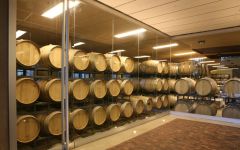Trapiche Falling Star Chardonnay 2002

Product Details
Your Rating
Somm Note
Winemaker Notes








Trapiche represents the richness of diversity in Argentina. Trapiche's motto is "where there is soil, the sky is the limit" and this leads the brand to explore Argentina's extensive lands in search of new experiences. Since 1883, Trapiche has been located in Maipú, in the province of Mendoza, and is the leading Argentine winery in terms of production and exports, reaching over 80 countries. Since the beginning, Trapiche has understood the promise of viticulture in Argentina. Trapiche specializes in bringing out the best of each terroir and creating unique wines from each. This diversity is possible thanks to 3000 acres of owned vineyards and 300 independent producers who contribute their best grapes for the wines. Quality, innovation and diversity have always been the pillars that guide Trapiche's journey.

One of the most popular and versatile white wine grapes, Chardonnay offers a wide range of flavors and styles depending on where it is grown and how it is made. While it tends to flourish in most environments, Chardonnay from its Burgundian homeland produces some of the most remarkable and longest lived examples. California produces both oaky, buttery styles and leaner, European-inspired wines. Somm Secret—The Burgundian subregion of Chablis, while typically using older oak barrels, produces a bright style similar to the unoaked style. Anyone who doesn't like oaky Chardonnay would likely enjoy Chablis.

With vineyards tretching along the eastern side of the Andes Mountains from Patagonia in the south to Salta in the north, Argentina is one of the world’s largest and most dynamic wine producing countries—and most important in South America.
Since the late 20th century vineyard investments, improved winery technology and a commitment to innovation have all contributed to the country’s burgeoning image as a producer of great wines at all price points. The climate here is diverse but generally continental and agreeable, with hot, dry summers and cold snowy winters—a positive, as snow melt from the Andes Mountains is used heavily to irrigate vineyards. Grapes very rarely have any difficulty achieving full ripeness.
Argentina’s famous Mendoza region, responsible for more than 70% of Argentina’s wine production, is further divided into several sub-regions, with Luján de Cuyo and the Uco Valley most noteworthy. Red wines dominate here, especially Malbec, the country’s star variety, while Chardonnay is the most successful white.
The province of San Juan is best known for blends of Bonarda and Syrah. Torrontés is a specialty of the La Rioja and Salta regions, the latter of which is also responsible for excellent Malbecs grown at very high elevation.
